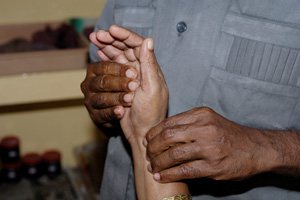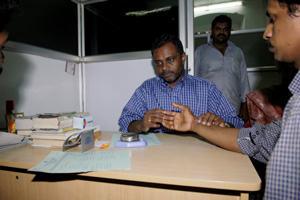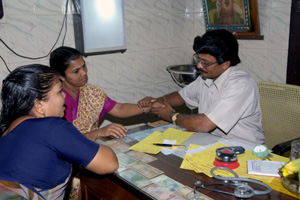The Principles of Disease and Diagnosis in Citta Medicine
By Kenneth Zysk
When residents of Tranquebar succumbed to illness or injury in the eighteenth century, they first sought help from one of the settlement’s colonial surgeons or doctors. However, if their affliction was not abated by the medicine available to them, they might well have looked for relief from an indigenous healer, who would have practised Citta medicine. The patient would have been treated in a different manner from that to which he or she was accustomed.
In all likelihood, the Citta doctor would have examined specific aspects of the patient to determine which humour or humours were vitiated or disturbed. According to Citta, as well as Ayurveda, the five elements that make up all matter combine to form the three humours in the body: wind and ether become wind, fire becomes bile, and earth and water become phlegm. Wind is responsible for nervous actions, movement, activity, sensations, etc, and resides in the five bodily winds; bile takes care of metabolism, digestion, assimilation, warmth, etc, and sits in the digestive track; and phlegm helps to give the body stability and resides in the chest, throat, head, and joints. Although wind predominates in youth and phlegm in old age, which is the exact opposite of Ayurveda, each individual is born with a particular configuration of the three, which is called the person’s innate or natural distribution of the three humours. A similar form of humoural medicine, derived from Greco-Roman medicine, would have been known but not practised by the Tranquebar doctors.
The Citta doctor would first determine the patient’s natural distribution from which he could determine which of the humours were affected. He would usually use examination of the pulse as the principle means to evaluate both the natural and the disturbed humoural condition. Afterwards, he might use a series of other tests to pin-point the exact problem. This procedure involves an examination of the patient’s tongue, complexion, voice, eyes, skin, stool, and urine in order to notice any abnormal colour, texture, and tone.
The predominant mode of diagnosis, however, involves examination of the pulse, which is felt on the female’s left and the male’s right hand by the doctor’s opposite hand, a couple of centimetres below the wrist-joint using the index, middle, and ring fingers of the hand. Pressure is applied by one finger after the other beginning with the index finger. Each finger represents a particular humour which in normal conditions has a movement representative of certain animals. The index finger feels the windy humour, which should have the movement of a swan, cock, or peacock; the middle finger feels the bilious humour, which should have the movement of a tortoise or a leach; and the ring finger feels the phlegmatic humour, which should have the movement of a frog or a snake. Any deviation from these basic movements indicates which humour or humours are disturbed. If all humours are affected the pulse is usually rapid with a good deal more volume.
As a backup, the Citta doctor would use the method of urine examination, which derives from the Arabic and Persian medical system of Unani. In addition to examining urine for its colour, smell, and texture, Citta medicine has developed a unique technique for determining the vitiated humour by reading the distribution of a drop of gingili (sesame) oil added to the urine. A longitudinal dispersal indicates the windy humour; dispersal in the form of a ring points to the bilious humour; and lack of dispersal indicates the phlegmatic humour.
After having undergone one, several, or all of these diagnostic procedures, the Tranquebar resident would have been given the results in terms of the vitiation of the humours, and would be prescribed a particular form of therapy. In the next report, we shall discuss the Citta cures by which the resident might have been treated.
|
|
Photos by: Christian Sebastia


|